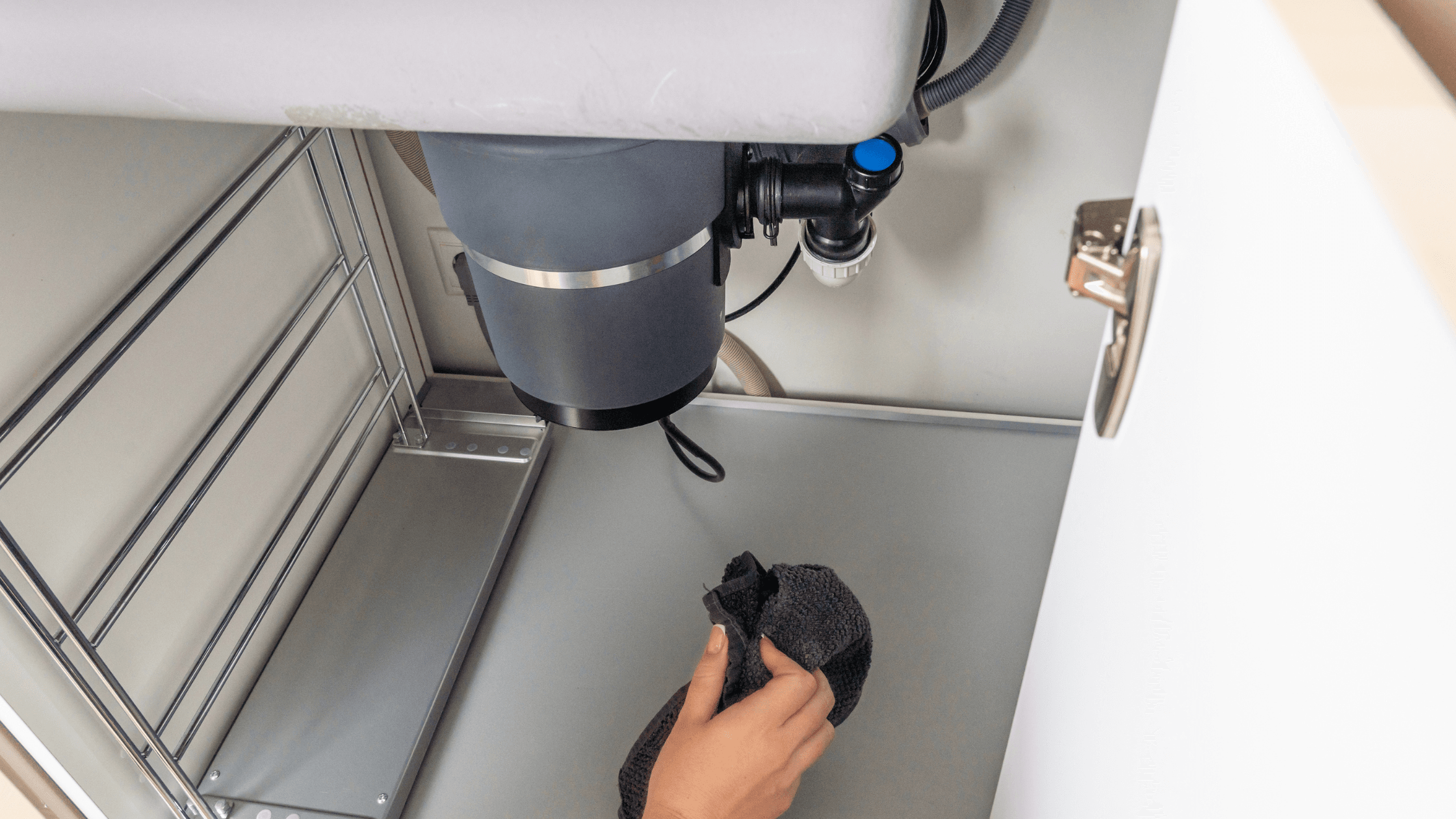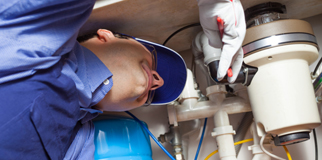Almost everyone has their own unique way of thinking involving Garbage Disposal Leaking From Bottom.

Waste disposal unit are necessary kitchen devices that assist in getting rid of food waste efficiently. Nonetheless, a leaking garbage disposal can be an irritating and untidy trouble to handle. Fortunately, lots of leakages can be repaired conveniently with a few basic actions. In this short article, we will talk about just how to fix a leaking waste disposal unit properly.
Introduction
Garbage disposals are set up under cooking area sinks and are created to shred food waste right into smaller items, enabling it to travel through the plumbing system quickly. While these gadgets are usually dependable, leakages can take place with time due to wear and tear, loose links, or damages to the device.
Usual Root Causes Of Leakages in Rubbish Disposals
Worn Seals and Gaskets
Seals and gaskets play a crucial role in protecting against water from dripping out of the waste disposal unit. Gradually, these elements can deteriorate, bring about leakages around the disposal system.
Loose Connections
The connections in between the garbage disposal and the pipes system can come to be loose with time, triggering water to leak out throughout operation.
Splits or Holes in the Disposal Unit
Physical damages to the garbage disposal, such as splits or holes in the real estate, can also lead to leakages.
Determining the Resource of the Leak
Prior to attempting to take care of a dripping garbage disposal, it is vital to identify the source of the leakage. This can typically be done with aesthetic evaluation or by carrying out straightforward tests.
Visual Evaluation
Check the waste disposal unit device carefully for any indications of water leakage. Pay attention to locations around seals, gaskets, and link factors.
Testing for Leaks
One way to test for leakages is by running water via the disposal device and checking for any noticeable indicators of leak.
Devices and Materials Needed for Repairing a Leaking Garbage Disposal
Prior to starting the fixing procedure, gather the required devices and products, including a screwdriver, adjustable wrench, plumbing's putty, substitute seals or gaskets, and epoxy or patching product for repairing splits or openings.
Step-by-Step Overview to Repairing a Dripping Waste Disposal Unit
Turn Off the Power
Prior to attempting any kind of repair work, ensure that the power to the waste disposal unit unit is shut off to avoid the threat of electric shock.
Find the Leakage
Recognize the exact place of the leak and determine the cause.
Tighten Connections
Use a wrench to tighten any kind of loosened connections between the disposal system and the pipes system.
Replace Seals or Gaskets
If the leak is because of used seals or gaskets, get rid of the old elements and change them with brand-new ones.
Patching Cracks or Holes
For fractures or holes in the disposal system, usage epoxy or an ideal patching product to secure the damaged area.
Evaluating the Garbage Disposal After Repair Work
When the repair work is total, evaluate the garbage disposal by running water through it to ensure that the leak has actually been dealt with.
Preventive Maintenance Tips to Avoid Future Leakages
To stop future leaks, it is necessary to perform regular upkeep on your garbage disposal. This includes keeping it tidy, preventing putting non-food things or difficult objects down the disposal, and occasionally looking for leaks or various other problems.
Verdict
To conclude, taking care of a leaking waste disposal unit is a relatively uncomplicated process that can be finished with basic devices and products. By complying with the actions described in this post and practicing precautionary upkeep, you can keep your garbage disposal in good working problem and avoid expensive repairs in the future.
What to Do About a Leaking Garbage Disposal
A leaking garbage disposal often goes unnoticed until you confront a sopping cabinet, a foul-smelling puddle, or an audible drip-drip-drip from the unit. The fix can be frustrating, too, because the leak can stem from a number of components in the system. Fortunately, with a little sleuthing, you can zero in on the leak and—depending on the exact location—stop the icky oozing and repair the component that caused it. Worst case scenario, if it turns out that the garbage disposal must be replaced, installing a new one is a reasonable do-it-yourself task for those with basic plumbing skills. Read on to keep the cash you’d otherwise hand over to a pro.
Prepare to find the leak
Prior to testing the garbage disposal for leaks, unplug it at the wall outlet and turn off the power from the breaker box to prevent electrical shock. Then insert a watertight sink stopper into your sink drain and wipe the unit dry with a clean cloth. In any handy container, mix a few drops of food coloring into a few cups of water, and pour the dyed water onto the sink stopper to help you locate the leak.
Investigate the source
the top, where the disposal meets the sink drain the side, where the dishwasher hose or main drain pipe connects to the disposal or the bottom of the unit Inspect each of these locations while gliding a light-colored rag over the unit; the dyed water will readily show on the rag and reveal the location of the leak. If a leak isn’t immediately apparent, remove the sink stopper and pour a few more cups of dyed water down the sink drain, then check for leaks again. Leaks near the top of the unit are more likely to show themselves while the sink is plugged, while side and bottom leaks are more noticeable while the sink is unplugged.
The metal sink flange that sits directly inside the sink drain is typically sealed around the top with plumber’s putty (a clay-like sealant) and then secured from under the sink with bolts. If the plumber’s putty deteriorates, or the bolts loosen, the flange can no longer form a watertight seal between the sink drain and the disposal—which could cause a leak at the top of the unit.
To reseal the leaky flange, you must first detach the garbage disposal. Start by loosening the screws securing the main drain pipe to the disposal, then loosen the screws in the metal clamp securing the dishwasher hose to the disposal and detach the drain pipe and dishwasher hose from the disposal. Loosen the screws in the mounting ring that connects the disposal to the metal mounting assembly beneath the sink, then pull down the disposal and carefully set it on a clean, dry surface. Loosen the bolts in the mounting assembly with a wrench, then pull down the mounting assembly and set it near the disposal.

I discovered that write up on How to fix a pretty consistent leak from my garbage disposal when doing a search on the search engines. In case you appreciated our post plz be sure to share it. Thanks a lot for taking the time to read it.
Booking Page